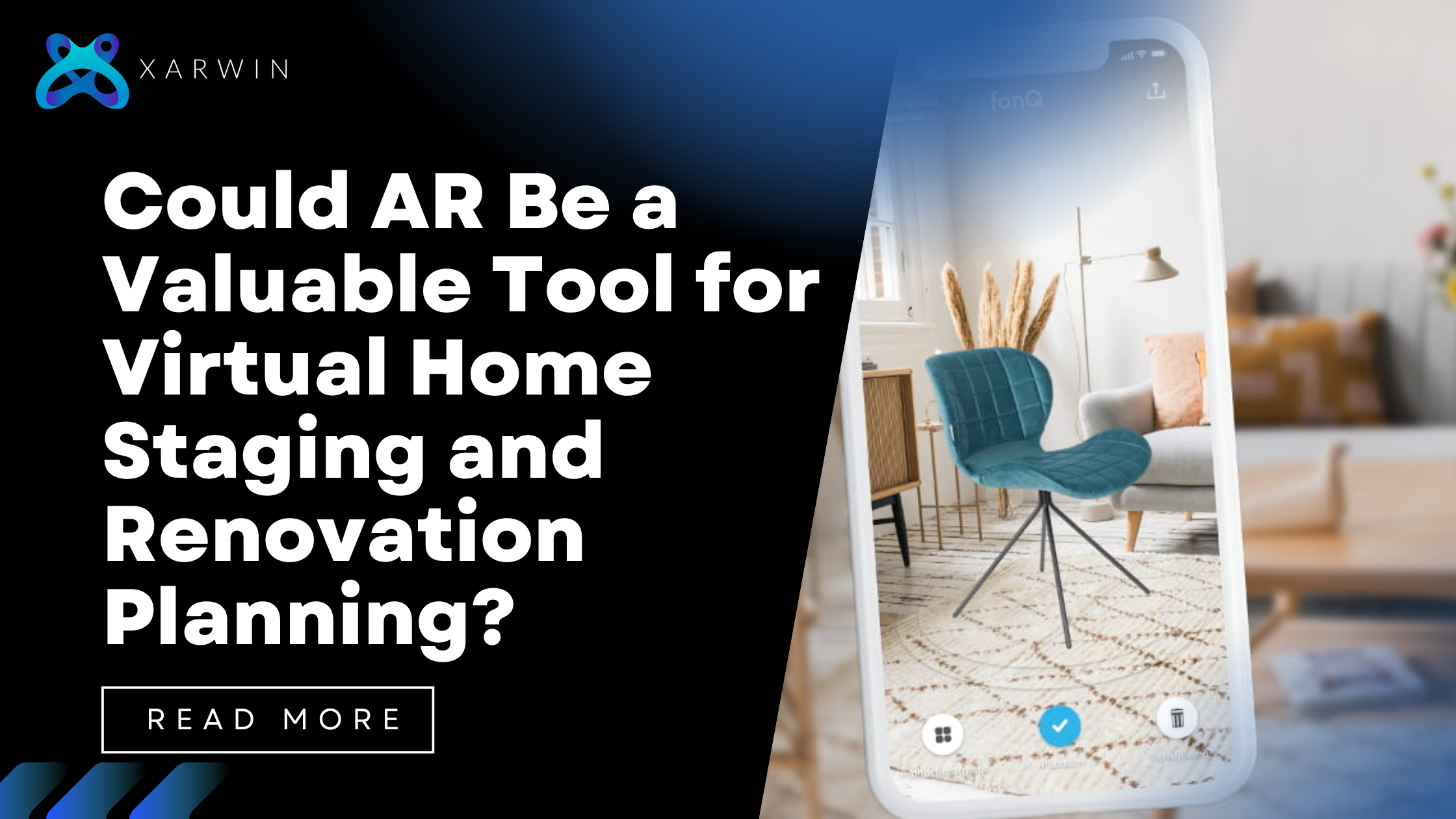In this blog, we’ll explore how AR is changing the way we approach home staging and renovation planning. It offers homeowners, real estate agents, and renovators new tools to visualize, experiment, and communicate more effectively.
Why AR for Virtual Home Staging?
Home staging involves setting up furniture, decor, and other design elements in a property to make it more appealing to potential buyers. Traditionally, this process involves physical staging, which can be costly and time-consuming. AR provides a compelling alternative by allowing virtual staging.
Here’s why AR is gaining traction in this field:
1. Cost-effective and Time-Saving
Unlike in many occasions where you have to physically move furniture to and even within the property before you arrive at the house, now you can stay where you are and use AR to have a good visualization. It will be composed not coupled with digital depictions of furniture and other fixtures that can be seen placed in the virtual space. Therefore, as a home or site stage can be done virtually in a matter of hours rather than days, this process accelerates the marketing of the property. Through these efficiencies, the agents dealing with real estate markets, which are fast-paced, can get an edge over their competitors.
2. Flexible Design Options
AR allows for unlimited design possibilities. Users can experiment with furniture arrangements, color schemes, and decor styles in real-time. This flexibility is invaluable when trying to appeal to diverse buyer preferences. Real estate agents can showcase multiple design concepts within minutes, providing buyers with a more tailored experience. Furthermore, this flexibility allows agents to adapt the virtual staging to different audiences, whether they’re targeting young professionals or families with children.
3. Enhanced Visualization
Buyers often struggle to visualize a property’s potential when it’s empty or poorly staged. AR provides an immersive experience, enabling buyers to see a space’s full potential. By superimposing virtual furniture and decor onto an empty room, buyers can better understand the layout and imagine how they would use the space. This enhanced visualization can lead to faster decision-making and reduce the need for additional property visits, which can be time-consuming and costly.
4. Remote Viewing and Collaboration
AR can be accessed via smartphones, tablets, or AR glasses, allowing remote viewing and collaboration. This is especially useful in the context of the COVID-19 pandemic, where social distancing and limited travel have made in-person property visits challenging. Real estate agents can host virtual tours with AR staging, enabling buyers to explore a property from anywhere. This remote capability also makes it easier for out-of-town buyers to consider properties without the need to travel, broadening the potential market for real estate agents.
AR in Renovation Planning
Beyond virtual staging, AR is proving invaluable for renovation planning. Homeowners and renovators can use AR to visualize design changes, test materials, and collaborate with stakeholders. Here’s how AR is transforming renovation planning:
1. Real-Time Design Visualization
Before AR, renovation planning relied heavily on sketches, blueprints, and 3D models. While these tools are useful, they provide a different level of immersion and context than AR. With AR, homeowners can see design changes in real-time, allowing them to make more informed decisions. This capability can lead to greater creativity, as homeowners are encouraged to experiment with different ideas without the fear of irreversible mistakes. It also fosters a more enjoyable and engaging design process, making renovations less stressful.
2. Enhanced Collaboration with Contractors
Effective communication between homeowners and contractors is crucial in renovation projects. Misunderstandings can lead to costly mistakes. AR fosters better collaboration by providing a common visual platform. Homeowners can use AR to illustrate their ideas, and contractors can offer feedback in real-time. This collaborative approach reduces errors and ensures everyone is on the same page. By using AR, contractors can demonstrate the feasibility of specific design choices, helping homeowners make practical decisions that align with budget and structural constraints.
3. Reducing Design Risks and Costs
Renovations often come with a degree of uncertainty, especially when making significant structural changes. AR reduces design risks by allowing users to visualize changes before construction begins. This “try before you buy” approach can help avoid costly mistakes and rework. Additionally, AR can simulate different lighting conditions, allowing users to see how materials and colors will look in various settings. This level of detail can prevent unexpected outcomes, leading to smoother project execution and a final result that meets or exceeds expectations.
4. Facilitating Remote Work and Project Management
In today’s increasingly remote work environment, AR is a valuable tool for managing renovation projects. Homeowners can use AR to track project progress, even if they’re not on-site. Contractors can use AR to share updates and get instant feedback from clients. This remote capability streamlines project management and enhances overall efficiency. It also allows stakeholders in different locations to collaborate in real-time, reducing the need for in-person meetings and ensuring projects stay on schedule.
Challenges and Future Prospects
While AR offers tremendous benefits, it also comes with challenges. Technical limitations, such as hardware compatibility and software glitches, can hinder adoption. Additionally, there’s a learning curve for users who are new to AR technology. Privacy concerns and data security are also critical considerations, especially when using AR in real estate and renovation projects.
Addressing these issues will require ongoing development and robust security measures to protect users’ data and ensure a seamless experience. Despite these challenges, the prospects for AR in virtual home staging and renovation planning are promising. As technology continues to advance, AR applications will become more user-friendly, accessible, and secure.
We can expect more sophisticated AR tools, greater integration with other technologies, and broader adoption across industries. This progression will create new opportunities for professionals in the real estate and renovation sectors, encouraging them to embrace AR as a key part of their toolkit.
Conclusion
Augmented Reality is revolutionizing the way we approach virtual home staging and renovation planning. By providing cost-effective, flexible, and immersive visualization tools, AR empowers homeowners, real estate agents, and renovators to make better-informed decisions. While challenges exist, the benefits of AR are clear, and its adoption is likely to continue growing.
As a trailblazer in augmented reality (AR), Xarwin combines innovation with a user-centric approach to redefine industry standards. Its team of expert engineers, designers, and strategists excels in crafting immersive AR experiences across various sectors. With each project, the company not only meets current demands but also shapes future trends, establishing itself as a leading force in the AR landscape.




